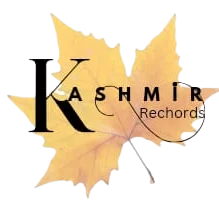Kashmir Rechords Desk
Dr. Sunil Chandra Ray’s ``Early History and Culture of Kashmir’’ gives an interesting account of Kashmir history, society and the life of the people, besides their food and drinking habits. According to the author `drinking of wine seems to have been quite popular in early Kasmira’’ (page number 206)
There is also the reference of the same in Kalhana’s Chronicle of the kings of Kasmira, where “we meet with a large number of personages who are addicted to drinking’’. The drinking of wine, far from being forbidden, has been specially recommended on ceremonial occasions in the Käśmiri Purana. Dr Ray says that Juices from grape and sugarcane, both of which grew in the valley, were distilled into spirituous liquors. The wine, cooled and perfumed with flowers, was appreciated as a delicious drink. Of drinks other than alcoholic, Kalhana mentions a kind of cold sweet drink (tuhina sarkaram) which was taken with great delight in hot summer days

Book Review: Early History and Culture of Kashmir
The book gives a general survey of the history of Kashmir down to 1338, when the throne was seized by the upstart Sahamera, who became the first Muslim Sultan of Kashmir under the name of Shams ud-din. The book, first published in 1957, includes a folding map of ancient Kashmir and some photographs, makes a mention of the Bharata Natya Shastra— an ancient treatise on the arts, originated in Kashmir. It has influenced dance, music, and literary traditions in Indian culture.
Published at Calcutta by U. N. Dhur & Sons Private Ltd, Dr. Ray’s “Early History and Culture of Kashmir’’ is an outstanding piece of research on a very important region of India.

Kashmir and Kingdom of Kuchi
The conversion of intermediate kingdom of Kuchi seems to have been the work of Kashmirian scholars. We know from the life of Kumarajiva that it was customary for youngmen of Kuchi to be sent to Kashmir for higher learning. Through Kuchi and Khotan the influence of Kashmirian scholars spread to China and in the list of learned monks from India preserved in the records of China, those from Kashmir, hold a high place.
The book makes a mention of Buddhism, Saivism and Sanskrit learning that had flourished in the valley and produced a remarkably rich culture until the Muslim conquest overturned the social structure of Kashmir. The integration of Kashmir life was so complete that one of his most remarkable books that Kshemendra, who was himself a Saivaite, produced was on the Avadanas of the Buddha, a classic in later Buddhist literature.
Dr. Ray, through this book, brings out some unique characteristics of Kashmir history. Not only does he give a connected narrative of Kashmir’s political evolution based on all available sources, literary, archaeological, numismatic, foreign allusions etc. but brings out the cultural, religious and social development of the people of the valley.

